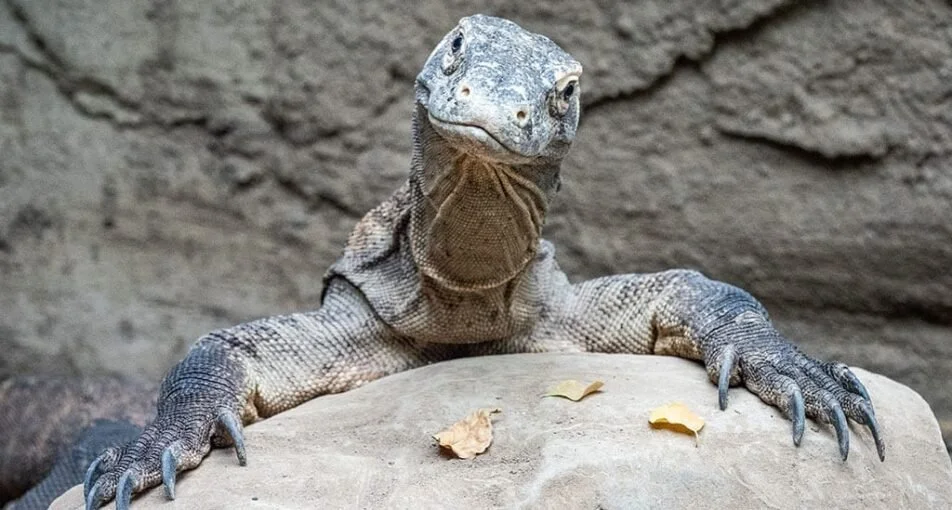An Inspection of Komodo Dragons Reveals a Toothy Ancestor
The world’s largest lizard, the Komodo dragon, is known as a voracious hunter with razor-sharp teeth. Now we know what makes those choppers so sharp: they’re laced with iron.
An international research team wanted to find out why dinosaur teeth were so good at cutting through tough flesh, so they looked closely at Komodo dragons as a dino proxy. They put a few of the dragon’s many knife-shaped teeth under the microscope, which revealed orange stains on the tips. Iron.
Iron-tipped teeth – the dragon has 60 of them, each around an inch long and serrated – are just one of the weapons in the beast’s arsenal. The bite is sharp, and it also comes with toxic saliva and a debilitating venom. Often its prey will be seriously injured by the bite, but killed by the subsequent sepsis.
This apex predator grows to more than ten feet long and can weigh over 150 pounds, as it will scarf down almost anything, including deer, wild pigs and water buffalo. A dragon will devour up to 80 percent its own body weight in a single meal, then spend weeks digesting it, eventually regurgitating the less palatable bits – horns, hair, teeth – in a mass covered in malodorous mucus. Yum.
The dragons live on four small islands in Indonesia’s archipelago, including its namesake Komodo. For all its formidable weaponry, the species (Varanus komodoensis) is listed as “endangered” by the IUCN, as it faces the usual threats of habitat loss, poaching, and climate change, along with less typical threats, such as earthquakes and volcanoes.
The new research appears in the journal Nature Ecology & Evolution.
A.R.H. LeBlanc et al. / Nature Ecology & Evolution
Photo credit: Denver Zoo Conservation Alliance








